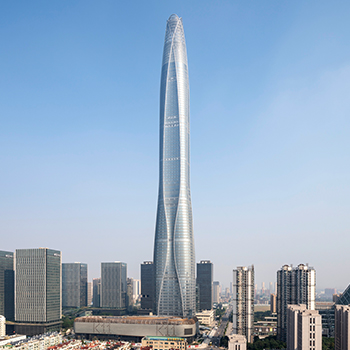Filter by
You must be a CTBUH Member to view this resource.
Aurora Melbourne Central
250 Latrobe Street
Building
Completed, 2019
3000
residential / serviced apartments
concrete
270.5 m / 887 ft
85
1
952
252
303
20
122,044 m² / 1,313,671 ft²
You must be a CTBUH Member to view this resource.
You must be a CTBUH Member to view this resource.
Proposed
Construction Start
Completed
Usually involved in the front end design, with a "typical" condition being that of a leadership role through either Schematic Design or Design Development, and then a monitoring role through the CD and CA phases.
The Design Engineer is usually involved in the front end design, typically taking the leadership role in the Schematic Design and Design Development, and then a monitoring role through the CD and CA phases.
The CTBUH lists a project manager when a specific firm has been commissioned to oversee this aspect of a tall building’s design/construction. When the project management efforts are handled by the developer, main contract, or architect, this field will be omitted.
Other Consultant refers to other organizations which provided significant consultation services for a building project (e.g. wind consultants, environmental consultants, fire and life safety consultants, etc).
These are firms that consult on the design of a building's façade. May often be referred to as "Cladding," "Envelope," "Exterior Wall," or "Curtain Wall" Consultant, however, for consistency CTBUH uses the term "Façade Consultant" exclusively.
Material Supplier refers to organizations which supplied significant systems/materials for a building project (e.g. elevator suppliers, facade suppliers, etc).
You must be a CTBUH Member to view this resource.
Usually involved in the front end design, with a "typical" condition being that of a leadership role through either Schematic Design or Design Development, and then a monitoring role through the CD and CA phases.
The Design Engineer is usually involved in the front end design, typically taking the leadership role in the Schematic Design and Design Development, and then a monitoring role through the CD and CA phases.
The Design Engineer is usually involved in the front end design, typically taking the leadership role in the Schematic Design and Design Development, and then a monitoring role through the CD and CA phases.
The CTBUH lists a project manager when a specific firm has been commissioned to oversee this aspect of a tall building’s design/construction. When the project management efforts are handled by the developer, main contract, or architect, this field will be omitted.
The main contractor is the supervisory contractor of all construction work on a project, management of sub-contractors and vendors, etc. May be referred to as "Construction Manager," however, for consistency CTBUH uses the term "Main Contractor" exclusively.
Other Consultant refers to other organizations which provided significant consultation services for a building project (e.g. wind consultants, environmental consultants, fire and life safety consultants, etc).
These are firms that consult on the design of a building's façade. May often be referred to as "Cladding," "Envelope," "Exterior Wall," or "Curtain Wall" Consultant, however, for consistency CTBUH uses the term "Façade Consultant" exclusively.
Material Supplier refers to organizations which supplied significant systems/materials for a building project (e.g. elevator suppliers, facade suppliers, etc).
CTBUH Releases Year in Review: Tall Trends of 2019
12 December 2019 - CTBUH Research
CTBUH Melbourne Hosts Seminar: Behind the Screen
28 August 2019 - Event

12 December 2019
Year in Review: Tall Trends of 2019
CTBUH Research
The year 2019 was remarkable for the tall building industry, with 26 supertall buildings (300 meters or taller) completed, the most in any year. This...
Located on the northern edge of Melbourne’s central business district, Aurora Melbourne Central will become the city’s second tallest building upon completion. Constructed as part of a building boom which brought an influx of residential units into the traditionally commercial city core, Aurora Melbourne Central was positioned above Melbourne Central station and was designed to take advantage of the transit oriented location while offering a diverse range of housing options split between traditional residences and serviced units.
The building is composed entirely of a reinforced concrete building structure utilizing an outrigger system with a central core and perimeter columns arraigned to maximize apartment layout flexibility while avoiding costly transfer columns where floor plates transition between residential and parking uses. Below grade, a pad footing foundation was utilized instead of drilled piles due to the adjacent subterranean structure of the Melbourne Central station, to which the building is directly linked through a pedestrian connection.
12 December 2019
The year 2019 was remarkable for the tall building industry, with 26 supertall buildings (300 meters or taller) completed, the most in any year. This is the second consecutive year in which this record was broken, besting 18 supertalls in 2018.
28 August 2019
CTBUH Melbourne hosted Behind the Screen, an evening seminar on construction management, organized in collaboration with the University of Melbourne.
Subscribe below to receive periodic updates from CTBUH on the latest Tall Building and Urban news and CTBUH initiatives, including our monthly newsletter. Fields with a red asterisk (*) next to them are required.
View our privacy policy